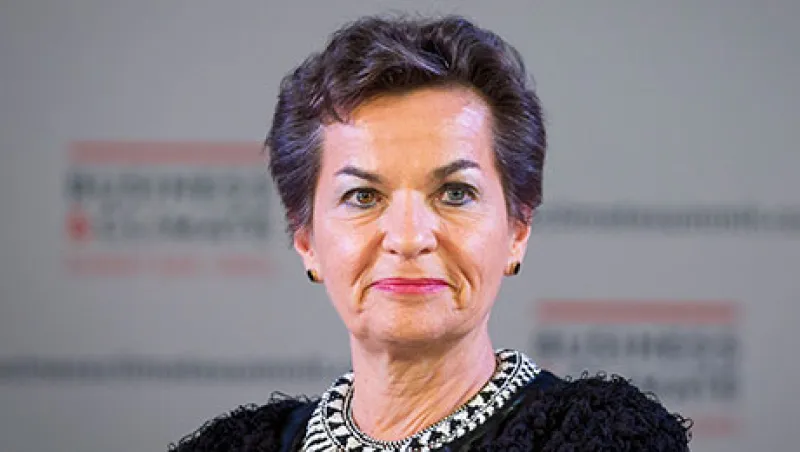When a new online platform detailing investors’ efforts to combat climate change launched in May at Paris’s Climate Finance Day, its founders were more interested in approval from a contingent largely not in attendance. Nathan Fabian, director of policy at United Nations–led investor network Principles for Responsible Investment (PRI), says he knew the Investor Platform for Climate Actions had “hit its first mark” when French Finance Minister Michel Sapin took to the podium and noted its significance.
The website is a collaborative effort by several investor networks, which agreed to “simplify and amplify” messaging about their actions on climate change ahead of the 21st session of the Conference of the Parties to the United Nations Framework Convention on Climate Change (UNFCCC), known as COP21, starting on November 30 in Paris. “We saw an opportunity to present a single platform covering all of the major initiatives that each of the various groups were working on, in order to best communicate with policymakers, including national governments,” says London-based Fabian.
To build and fund the platform, Fabian’s PRI spent two months collaborating with six other investor bodies: the Hong Kong–based Asia Investor Group on Climate Change (AIGCC); CDP (formerly the Carbon Disclosure Project); the Institutional Investors Group on Climate Change (IIGCC), in London; Sydney’s Investor Group on Climate Change (IGCC); U.S. sustainability advocacy group Ceres’ Investor Network on Climate Risk (INCR); and the U.N. Environment Program Finance Initiative.
Chris Davis, senior director of investor programs at Boston-based Ceres and chief of staff at INCR, says the platform is based on the Low Carbon Investment Registry, a public online database that went live just before the U.N.’s Climate Summit last September in New York. Developed by the Global Investor Coalition on Climate Change, which groups the AIGCC, IIGCC, IGCC and INCR, the registry tracks low-carbon investments made by institutions to encourage idea sharing among green-minded investors with substantial capital to deploy.
The registry drew the support of the U.N. secretary general’s office, especially UNFCCC executive secretary Christiana Figueres, who saw its potential not only to educate investors new to low-carbon investments but to serve as a convenient reference for policymakers in advance of the most important climate gathering in years. The hypothesis: If governments can clearly see the investor capital already dedicated to low-carbon assets and infrastructure, they may feel more confident in setting ambitious and concrete carbon reduction targets for their countries, putting a price on carbon, supporting renewable energy and reducing subsidies to fossil fuels.
“That’s our theory of change,” Davis says. “We hope the governments are listening. We’re trying to say, ‘The private sector is ready and willing to invest — and has started to invest.’”
The 17 initiatives listed on the Investor Platform for Climate Actions have the support of more than 400 investors from 30 nations, representing a total $25 trillion in assets. They include the PRI’s Montréal Pledge — a commitment by investors including French insurer AXA, Paris-based BNP Paribas Investment Partners and the California Public Employees’ Retirement System to annually disclose their portfolios’ carbon footprints — and the Portfolio Decarbonization Coalition, a group committed to reducing the carbon intensity of their portfolios and creating products that allow investors to do so.
In 2009, when world leaders met in Copenhagen for the last global climate change conference, investors kept a low profile. But that gathering failed to yield an agreement, and discussions about how climate change could present major risks to portfolios — via the threat of so-called stranded carbon assets, for example — have since grown more pointed. This year investors consider it incumbent upon them to ensure that a deal comes together, Davis says.
“There have been investors who have gone to previous [conferences of the parties], but I think this one will be unprecedented in the level of participation and focus,” he says. “We all realize that we’ve got to get a mutual agreement here or we’re going to keep falling short and failing to mitigate this risk.”
Though one of the central aims of the new platform is to show world leaders how much capital has moved into low-carbon or carbon-mitigating investments, it’s also meant to grow that pile of money much bigger. Frédéric Samama, deputy head of institutional and sovereign clients at €954 billion ($1.04 trillion) Amundi Asset Management, hopes that asset owners will be driven to join their peers’ efforts and that asset managers will respond by creating more products to meet the new demand, such as low- or no-carbon funds and indexes.
Samama, whose Paris-based firm is a co-founder of the Portfolio Decarbonization Coalition, points out that asset owners and managers signed on to CDP account for a staggering $95 trillion in assets. “But when you talk to them, they say, ‘We are interested, but we don’t do anything,’” he notes. “That’s the real value of this platform, to send a signal to other asset owners. It accelerates history by having examples of some leading asset owners around the world.”






